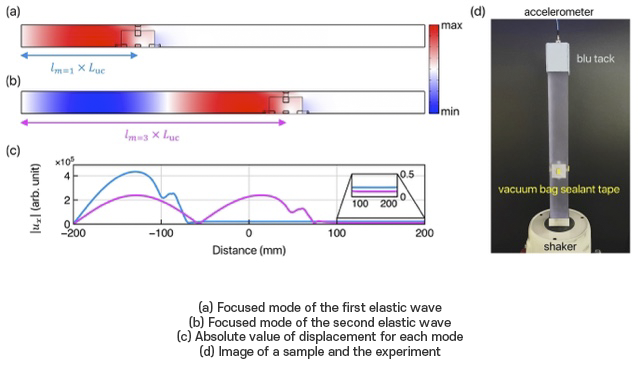Assume an imaginary case where two persons are holding a rope, each gripping one end. Person A starts to shake the rope in an up-and-down motion, thereby producing a propagating wave that moves toward person B.

Image Credit: Pohang University of Science and Technology
Now, if person C, standing between person A and B, gets involved in a relatable frequency of waving motion like that of the rope’s wave, is it possible for the wave to be redirected back to person A instead of reaching person B? At first, this situation seems unlikely, as person C is not physically contacting with the rope held by person A and person B, seemingly confronting the likelihood of attaining a 100% wave reflection identical to that noticed in an ideal mirror.
However, this occurrence finds an explanation within the realm of physics and is called the “bound state in the continuum (BIC)”. The study of BIC has included varied disciplines along with optics, quantum mechanics, semiconductors, and nano-optics. Using this phenomenon allows the confinement of light particles, or photons, avoiding their onward propagation.
Furthermore, BIC holds the possibility for the development of extremely sensitive sensors. Earlier studies into BIC have mainly concentrated on nanoscale and microscale contexts whereas, examinations with the use of visible structures to describe this phenomenon have not been present.
A study group headed by Professor Junsuk Rho from the Department of Mechanical Engineering and the Department of Chemical Engineering and Ph.D. candidates Dongwoo Lee, Jeonghoon Park, and Seokwoo Kim from the Department of Mechanical Engineering at Pohang University of Science and Technology (POSTECH) efficiently established bound states for the first time in the continuum via the use of an acoustoelastic coupling structure. The study outcomes have been published in Extreme Mechanics Letters, which is one of the world’s leading journals in the area of mechanics.
The study group developed an experiment setup focusing on confirming the presence of the BIC phenomenon via the interplay of elasticity and sound. Starting with fabricating an elastic bar looking like a stick, the team went on to incite vibrations in the elastic bar through a shaker. As a result, coupling between elasticity and sound was engendered on the elastic bar by air injection at a predetermined location.
In the experiment, when the elastic progressive wave’s frequency almost aligned with the resonance frequency produced inside the acoustic cavity, a strong interaction manifested, leading to the complete reflection of the progressive elastic wave. To summarize, the elastic wave returned in the direction it came from, turning indefinitely limited within a certain space, identical to the performance noticed while encountering a mirror, although with the presence of sufficient room for onward propagation.
Although many studies have explored the use of bound states in the continuum, this study shows the first occasion of unveiling the BIC phenomenon via sound and elasticity.
“This study illustrates that applications of acoustoelastic coupling can be expanded to vibration focusing and energy storage.” He added, “The findings from this research hold promise for diverse applications including the development of filters capable of selectively isolating specific frequencies or the advancement of energy harvesting methodologies that convert kinetic energy into electric energy.”
Professor Junsuk Rho, Department of Mechanical Engineering and the Department of Chemical Engineering, Pohang University of Science and Technology
The study was done with financial aid from the Ministry of Science and ICT and the National Research Foundation of Korea.